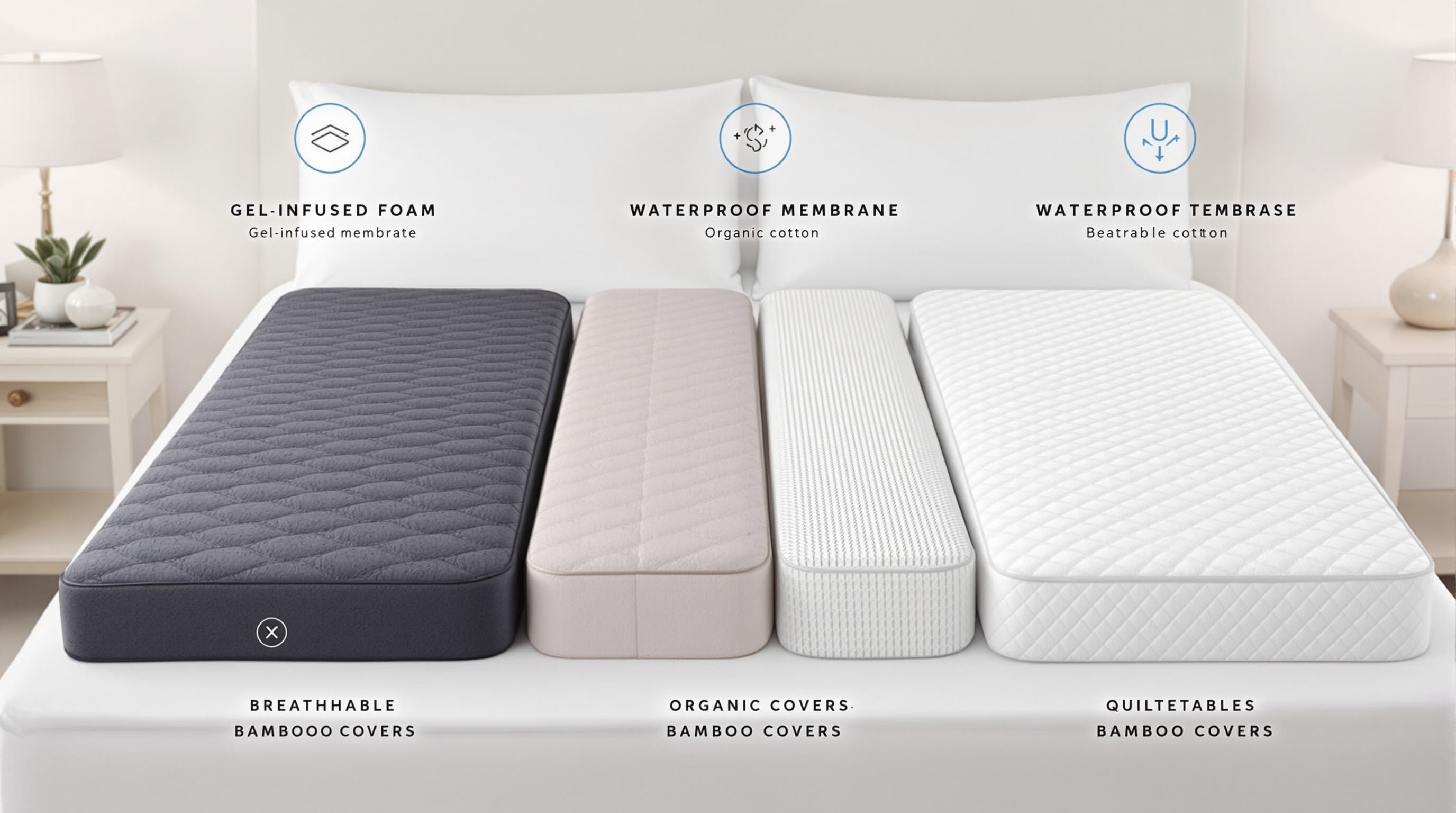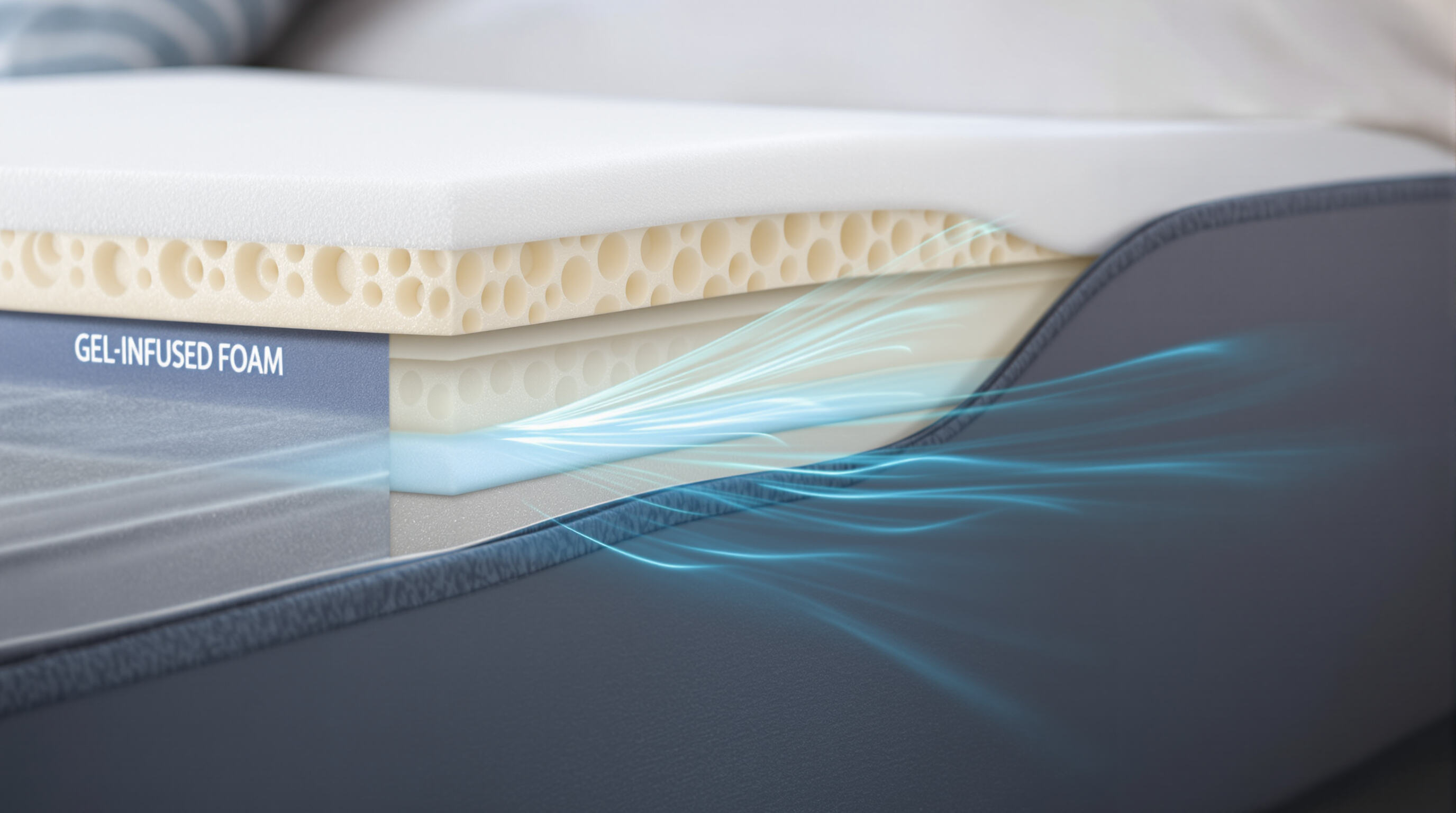A good mattress pad can really boost how comfortable sleeping feels while keeping the mattress itself protected. These pads are usually pretty thin, about an inch and a half at most, so they work great for giving old beds a little refresh without making them taller. They're not like those thick mattress toppers though. Instead, mattress pads offer just a bit of extra support that helps when someone has some nagging back pain or sleeps on something too firm. According to some studies published in Sleep Health Journal back in 2022, around two thirds of people who started using mattress pads reported better sleep quality. Beyond comfort, these pads act as barriers against accidents, dust mites, and general wear and tear. Most folks find their mattresses last anywhere from two to three years longer with regular pad protection. When shopping around, look for ones that can go in the washing machine regularly and have those elastic edges sewn into place rather than loose straps hanging off.
There are basically three good reasons why people should consider getting a mattress pad. First off, they keep those annoying stains away from ruining the mattress itself. Second, they provide extra cushioning where it matters most, which makes all the difference for folks who sleep on their sides. And third, these pads actually cut down on allergens building up over time. According to some industry research published last year in the Home Textiles Report, using pads can save around 35% on mattress replacements in the long run. Most modern pads are pretty thin too, so they still work well with regular fitted sheets without any issues. For allergy sufferers or anyone with sensitive skin, there are special hypoallergenic options available that really do make a noticeable difference when it comes to controlling dust mites.

People who tend to get too warm at night might find relief with cooling mattress pads, which typically lower surface temps around 2 to 3 degrees Fahrenheit according to recent research from Sleep Science in 2023. The best ones on the market these days incorporate things like gel infused foam along with those fancy phase change materials PCM stuff that actually soaks up body heat while we're in our deeper stages of sleep. Many brands also feature breathable bamboo fabric covers paired with open cell foam structures underneath. These combinations create better air circulation than regular old polyester pads do, probably somewhere around 40% improvement in airflow. As a result, excess heat gets pushed away from the body more effectively all through the night, making for a much more comfortable sleeping experience overall.
Medical-grade waterproof pads use quiet TPU membranes that block 98% of liquid penetration. Many now include antimicrobial treatments to prevent mold in humid conditions. For incontinence, triple-layer designs with moisture-wicking tops outperform basic pads in durability and absorption (2022 Textile Protection Report).
Hypoallergenic pads with OEKO-TEX® certification block 99% of dust mites. For children, models with sewn-in elastic corners stay secure during active sleep. Pediatric specialists recommend temperature-neutral pads with GRECE-certified fibers, which have been linked to a 31% reduction in night waking (2024 Pediatric Sleep Analysis).
When it comes to letting air circulate and being gentle on sensitive skin, natural fabrics just work better. Take cotton for instance it keeps things at a comfortable temperature while soaking up sweat, which is why people wear it all seasons long without issues. Bamboo fabric has another trick up its sleeve since the plant itself grows so fast, plus it cools down the body naturally because of how its fibers react to heat. Then there's Tencel, also known as lyocell, made through this eco-friendly method where they actually reuse most of what goes into production. The result? A fabric that feels super smooth against the skin and lasts forever. What makes these materials stand out even more is their ability to keep dust mites away without needing any special treatments, something synthetic fabrics often require but still don't match.
Blends combine cost-efficiency with practical benefits but come with trade-offs:
Pros:
• Polyester-cotton blends cost 30–50% less than pure natural fibers
• More wrinkle-resistant and durable
• Easier to machine-wash and maintain
Cons:
• Retain 25% more heat than natural fabrics
• Shed microplastics during washing
• Less biodegradable, increasing landfill impact
While blends offer value, natural fibers are superior for long-term health and environmental sustainability.
GOTS and OEKO-TEX Standard 100 certifications basically check that products don't contain dangerous stuff like formaldehyde or PFAS, which makes them safer choices for people who wear them. When it comes to eco friendly fabrics, organic cotton stands out along with Tencel because they actually produce zero carbon emissions during manufacturing and will completely break down when discarded. More and more companies are adopting green design approaches these days. For consumers, things like where materials come from and whether items can be recycled matter just as much as how comfortable they feel on skin. This helps shoppers make purchases that protect both their own health and the planet at the same time.

The quality of our sleep really depends on how warm or cool our bedrooms are. Most experts suggest keeping things around 60 to 67 degrees Fahrenheit for best results since extreme temperatures can wake us up during the night. People who tend to sweat a lot while sleeping often find cooling mattress pads extremely helpful in maintaining comfort throughout the night. According to research published last year by NSF, adults who wore clothing made from special cooling materials actually stayed asleep for almost half an hour extra compared to when they didn't have them. The way these mattress pads work involves several different approaches to controlling body heat.
Active cooling layers draw body heat away from the sleeping surface. Stable skin temperature supports deeper sleep onset, and research shows thermal-neutral bedding extends restorative sleep phases by 23 minutes per night (Sleep Health Foundation 2024).
Phase-change materials (PCMs) absorb heat as they shift from solid to liquid, while gel beads distribute warmth via convection. When embedded in foam, both stabilize surface temperatures within ±2°F of your ideal range. Studies confirm PCM-infused fabrics sustain cooling effects three times longer than standard pads.
Advanced designs use 3D spacer meshes and perforated foams to create chimney effects that enhance airflow. Combined with moisture-wicking textiles:
Lab tests show engineered cooling pads reduce surface heat by up to 8°F, while basic quilted pads perform poorly in humidity. Consumer reports indicate 73% satisfaction with technical cooling models, compared to just 29% for basic versions—confirming that advanced thermoregulation delivers measurable benefits.
Getting the right size matters a lot when it comes to proper protection. When shopping for pads, make sure they match your mattress type whether its Twin, Full, Queen, King or even the longer California King version. Thickness counts too. If a pad is too thin, it might leave gaps or slip around during the night. On the flip side, something too big just ends up creating annoying bunches all over the place. Before buying, take a moment to compare what the maker says about sizes with exactly what measurements your mattress has. This helps avoid those frustrating situations where parts of the mattress stick out from under the pad or the corners keep coming loose.
To prevent slippage, look for silicone-backed surfaces, elastic corner straps, or full wrap-around skirting—especially important for adjustable beds. Models combining non-slip bases with anchored straps reduce movement by 84% (International Bedding Standards, 2023), ensuring consistent positioning and protection without nightly readjustment.
Mattress pads provide basic comfort and light protection with thickness under 1.5 inches, whereas toppers offer significant feel alteration at 2-4 inches. Mattress protectors are less than 0.5 inches thick and serve as waterproof barriers, protecting against stains and allergens.
Yes, mattress pads offer a bit of extra support, which can help with nagging back pain, especially if the mattress is too firm.
Yes, cooling mattress pads can lower surface temperatures by 2 to 3 degrees Fahrenheit and improve airflow, making it more comfortable for hot sleepers.
Hypoallergenic pads block up to 99% of dust mites, making them ideal for people with allergies or sensitive skin.
Yes, using mattress pads can prolong a mattress's life by acting as a barrier against accidents and dust, leading to fewer replacements.
 Hot News
Hot News2025-09-04
2025-09-02
2025-09-01
2025-07-08
2025-06-10
2025-11-27